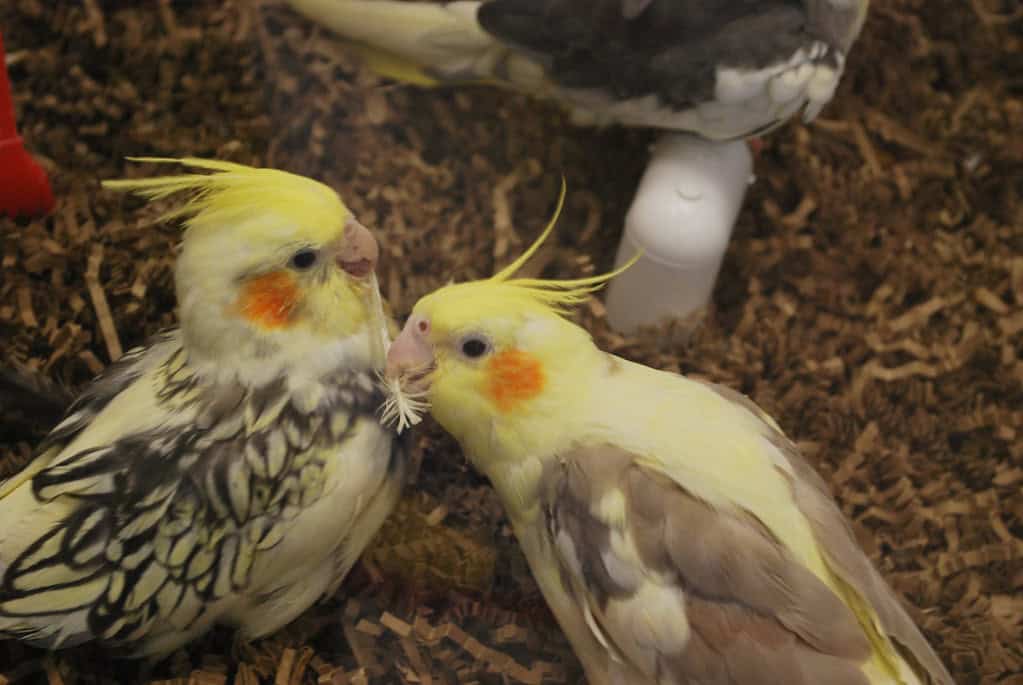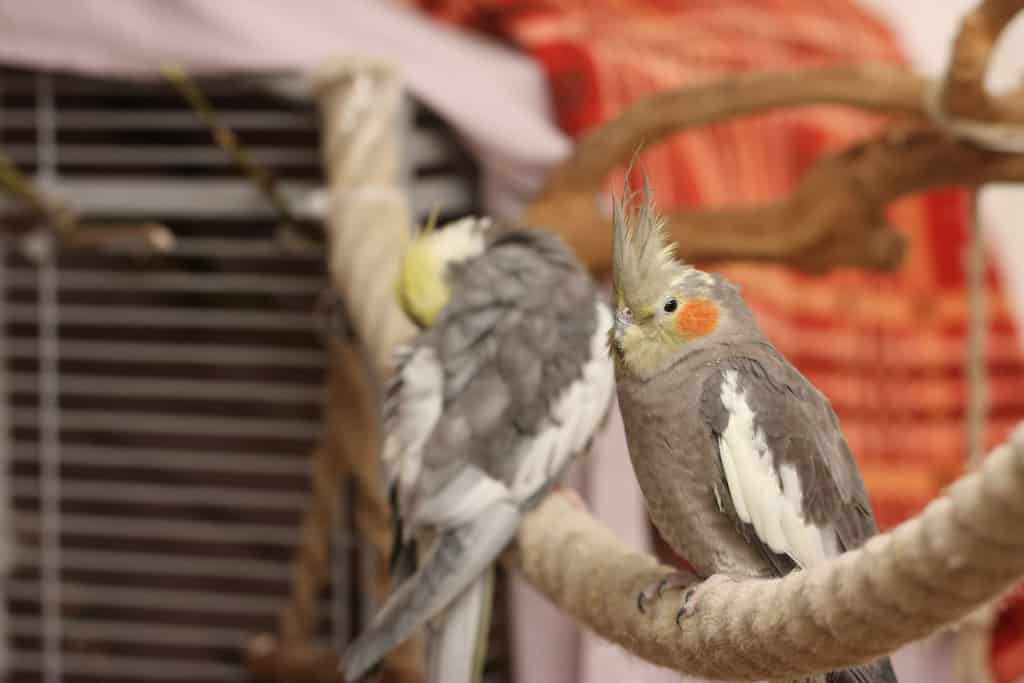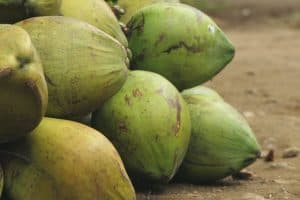Caring for a cockatiel involves more than just providing food and water; it’s crucial to monitor their health to ensure they live a long, happy life. You might wonder, “How to monitor your cockatiel’s health?” Well, it starts by understanding the subtle signs of their well-being and knowing when something might be off. Whether you’re a new bird owner or a seasoned bird enthusiast, keeping an eye on your feathered friend’s health can sometimes feel daunting.
From observing their behavior and feather condition to monitoring their eating habits and droppings, each aspect offers vital clues about their health. Don’t worry, though; once you know what to look for, it becomes second nature. This introduction will guide you through the basics of keeping your cockatiel in top shape, ensuring you’re prepared to provide the best care possible.
Understanding Your Cockatiel

Gaining a deep understanding of your cockatiel forms a crucial part of ensuring their overall well-being and health. Recognizing their normal behavior and characteristics plus being able to spot early signs of illness can help you maintain their health and act swiftly if issues arise.
Characteristics and Behaviors
Your cockatiel’s behavior provides significant insight into its health and happiness. Typically, healthy cockatiels are active and alert, showing keenness to interact with their environment. They enjoy playing with toys, singing, and exploring their surroundings. Changes in these behaviors, such as a decrease in activity or a lack of interest in interaction, might indicate health concerns.
Cockatiels, like other pet birds, require a balanced diet; not just seeds, but a variety of foods to maintain optimal health. Observing your bird’s eating patterns forms an essential aspect of monitoring their health. An abrupt change in appetite is often the first sign of an underlying issue.
Signs of a Healthy Bird
Identifying the signs of a healthy bird will empower you to better gauge your cockatiel’s condition on a regular basis. A healthy cockatiel has bright, clear eyes and clean, smooth feathers. The bird should appear well-preened with no bald spots or feather plucking, which can be signs of stress or illness. Droppings should be firm and clear, without any signs of diarrhea or abnormal colors, which could indicate digestive problems.
Regularly checking these health indicators helps in early detection of possible ailments, which is crucial for immediate attention and consultation with a qualified avian veterinarian if necessary. Regular physical examinations by a veterinarian can reinforce your observations and ensure any potential issues are addressed promptly.
Common Health Issues in Cockatiels

Monitoring your cockatiel’s health involves identifying early symptoms and addressing specific ailments that commonly affect these birds. Recognizing signs of illness early can mean a quicker recovery and a happier bird.
Recognizing Symptoms Early
Understanding the early signs of illness in cockatiels boosts your ability to seek timely care from an avian veterinarian. Common early symptoms include lethargy, reduced singing or chirping, and a lack of interest in food or interaction. Changes in droppings, such as watery or discolored stools, also serve as crucial indicators. If your cockatiel begins to display any of these symptoms, it’s vital to provide a separated and quiet environment to reduce stress while you consult with a veterinarian. Sick birds can deteriorate rapidly, so prompt attention is essential.
Respiratory, Feather, and Digestive Problems
Respiratory issues in cockatiels often manifest as sneezing, nasal discharge, or labored breathing. Exposure to drafty environments or airborne contaminants like cigarette smoke and strong fumes can trigger these symptoms. Feather problems, such as plucking or excessive molting, might indicate stress, dietary deficiencies, or more serious health conditions.
Digestive issues are noticeable if your cockatiel has changes in appetite, swollen abdomen, or abnormal droppings. These symptoms require immediate attention from an avian specialist to prevent further health deterioration. Implementing a balanced diet and ensuring a clean, well-ventilated cage environment helps manage and prevent these common issues.
Nutrition and Diet

Maintaining a balanced diet is critical for your cockatiel’s well-being. Nutrition profoundly affects their health and can prevent common issues before they arise.
What to Feed Your Cockatiel
Cockatiels require a varied diet that includes seeds, fruits, and vegetables to remain healthy. Ensure to provide a good mixture of seed-based foods and pellets, as seeds alone don’t fulfill all nutritional requirements. Incorporating fresh vegetables and fruits into your bird’s diet enhances their intake of vitamins and minerals, crucial for maintaining their immune system. Some excellent food choices include:
- Seeds and Pellets: Form the base of a cockatiel’s diet, but ensure pellets are formulated specifically for small to medium-sized birds.
- Vegetables: Carrots, broccoli, and leafy greens, like spinach, provide necessary vitamins and minerals.
- Fruits: Apples and berries can be given in moderation to avoid excess sugar.
Regular access to clean, fresh water is essential, and offering these foods in moderation helps prevent obesity and other related health issues. Cockatiels eat a variety of foods to maintain their health, so variety is key.
Foods to Avoid
Certain foods can be harmful to your cockatiel and must be strictly avoided to prevent potential health issues. Here’s a list of foods you should never feed your cockatiel:
- Avocado: Contains persin, a fungicidal toxin, which can cause cardiac arrest and respiratory distress in bird species.
- Chocolate and Caffeine: These contain substances that can be toxic and potentially lethal to birds.
- Onions and Garlic: These can cause stomach upset and anemia in cockatiels due to the sulfur compounds they contain.
Additionally, avoid giving your cockatiel any salty or sugary snacks, as these can disrupt their digestive health and lead to further complications. Always ensure the food you provide is safe and appropriate for their dietary needs to support overall health and vitality.
Regular Veterinary Care
Ensuring your cockatiel remains healthy involves regular visits to an avian veterinarian. Consistent check-ups help monitor your bird’s health, catching potential issues before they become serious.
Importance of Annual Check-Ups
Annual check-ups are essential for maintaining your cockatiel’s health. During these visits, your avian veterinarian conducts a thorough physical examination to assess your bird’s overall condition. The vet checks for signs of illness, including changes in weight or feathers, and evaluates the bird’s diet to ensure it’s balanced. Blood tests and other diagnostics may be performed to confirm the absence of infections or diseases. These regular assessments confirm your pet’s well-being and help in making any necessary adjustments to their care regimen.
When to Seek Immediate Veterinary Attention
You should seek immediate veterinary attention if you notice any sudden or severe changes in your cockatiel’s behavior or physical condition. Some signs that require urgent care include rapid weight loss, difficulty breathing, prolonged sitting at the cage floor, or displaying signs of distress like feather plucking. Additionally, changes in droppings, such as diarrhea or discolored droppings, indicate health issues that need quick intervention. Quick responsiveness to these symptoms ensures accurate diagnosis and treatment, which could be critical for your bird’s survival.
- NUTRITIONALLY COMPLETE COCKATIEL FOOD: formulated by top avian veterinarians and avian nutritionists
- NON-GMO AND HUMAN-GRADE INGREDIENTS: no artificial colors, flavors, or preservatives
- RICH IN ANTIOXIDANTS & OMEGA 3&6 BALANCED: help support healthy skin, feathers, and immune system
- MADE IN THE USA: our food is mixed, formed, and packaged in small batches and under one roof on the Lafeber family farm in Cornell, IL
- 100% SATISFACTION GUARANTEE: we are a small family company that works hard to produce gourmet pet bird food, which is why we're confident in offering a 100% satisfaction guarantee
Daily Health Monitoring
Monitoring your cockatiel’s health daily is crucial to catch early signs of illness and ensure their well-being. Consistent observation helps you understand normal behaviors and recognize any troubling changes, providing you the best chance to respond effectively.
Visual Inspections and Weight Checks
Perform daily visual inspections to check for signs of good health in your cockatiel, such as bright eyes, clean and smooth feathers, and normal activities. Begin by examining your bird’s eyes; they should be clear and alert with no discharge. Feathers should be smooth and shiny without any bald patches or signs of feather plucking that could indicate stress or disease. Observe the beak, feet, and legs for any abnormalities, such as cracks, overgrowth, or discoloration. Pay close attention to your bird’s feet, as issues here can sometimes signal underlying health problems.
Regularly weigh your cockatiel on a gram scale to maintain a record of their normal weight, as fluctuations can indicate health issues. Weight loss, even of a few grams, could suggest a hidden illness requiring attention from an avian veterinarian.
Behavioral Observations
Pay attention to your cockatiel’s behavior, which can be an excellent indicator of their health status. A healthy cockatiel generally exhibits curiosity, is active, and engages in regular activities like flying, climbing, or playing. Changes in behavior, such as increased lethargy, reduced vocalizations, or aggression, can be precursors to health issues. Also, ensure that their eating patterns remain consistent, as any change in appetite can be a sign of stress or illness.
Look for any unusual behaviors such as sitting low on perch, feathers fluffed up continuously, or difficulty in flying, as these can hint at illness or discomfort. If you notice any such changes, it’s advisable to consult with a qualified avian veterinarian to rule out underlying health problems and discuss treatment options.
Why Monitoring Health is Crucial for All Pet Birds
Monitoring the health of your cockatiel is not just about observing their behavior and diet but also understanding how these elements play into their overall well-being. This vigilance is essential for all pet birds, including other birds, as their health can be equally delicate and complex. For seed-eating birds like cockatiels, ensuring a balanced diet is crucial. While seeds are a staple, a diverse diet that includes fruits, vegetables, and specially formulated pellets will help maintain their health and prevent common issues.
How Cockatiel Flies and Its Impact on Health
A cockatiel’s ability to fly is a significant indicator of their physical health. Cockatiels that fly regularly are usually in good health and are engaging in natural behaviors that promote well-being. However, if you notice a decrease in their flying activity or if they seem to struggle when they do fly, it could be a sign of underlying health issues. Regular exercise, including flying, is crucial for keeping their muscles and joints healthy. If your cockatiel appears reluctant to fly or has trouble doing so, it’s important to investigate the cause and consult an avian veterinarian if necessary.
The Role of Bird Eating Behaviors in Health
Bird eating behaviors provide valuable insights into their health status. Cockatiels and other birds have specific dietary needs, and their eating habits can indicate how well they are maintaining their health. For instance, if a cockatiel suddenly changes its eating patterns or refuses food, it could signal a health problem. Observing how much and what types of food your cockatiel eats, including their reaction to different foods, can help you identify potential issues early. Bird owners should ensure their pets have a varied diet and monitor their eating habits closely.
Advice for New Bird Owners
For new bird owners, understanding the intricacies of bird care can be overwhelming. It’s important to learn about the specific needs of cockatiels and other birds to provide the best care possible. Regular monitoring, including tracking eating habits and behavior, will help you notice any deviations from their normal patterns. New bird owners should also educate themselves about the dietary needs of seed-eating birds and ensure they are providing a balanced diet. By being attentive and proactive, you can help ensure that your cockatiel and other birds remain healthy and happy.
Final Thoughts: How to Monitor Your Cockatiel’s Health
Keeping a vigilant eye on your cockatiel’s health is a vital aspect of responsible pet ownership. By integrating daily health checks and noting any changes in behavior or appearance you’re taking proactive steps to ensure your feathered friend’s well-being. Remember it’s always better to be cautious and consult an avian veterinarian at the first sign of distress. Your attentiveness could make all the difference in maintaining your cockatiel’s health and happiness for years to come.




